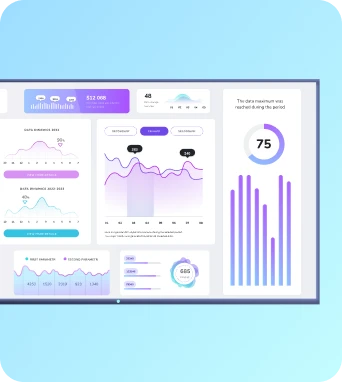API-based content triggers
API-based content triggers are automated signals sent to a digital signage platform that instruct players or dashboards to fetch, update, or replace content. They use webhooks, REST APIs or GraphQL endpoints to translate external events and data into immediate, contextual changes on displays across signage networks and workplace dashboards.
What is API-based content triggers?
How API requests map to content actions and player behaviour
API-based triggers are effectively a control plane for content distribution. At the most basic level, a trigger endpoint accepts an authenticated request and maps payload fields to a platform action: create an asset, update a template variable, schedule a time-window, or toggle a channel on a specified player group. Implementations typically expose RESTful POST endpoints or webhook URLs; for example, a POST to /triggers with a JSON body { "event":"sale", "store_id":"S123", "promo":"15OFF" } can instruct the signage platform to insert a targeted promotional slide for the relevant player group. Advanced platforms support field mapping and transformation rules so that the raw payload can be parsed and variables injected directly into HTML5 templates or dynamic widgets on dashboards. For secure operation, these endpoints validate signatures, require API keys or OAuth tokens, and implement rate limiting to protect player stability. On the player side, triggers either prompt the server to push updated manifests or instruct players to poll for change events. A push model reduces latency: upon receipt of a trigger, the server notifies affected players via a channel (for example, MQTT or a WebSocket notification) to fetch a revised playlist. In contrast, a poll model keeps players stateless but depends on shorter polling intervals for responsiveness. Designers and engineers must therefore choose the interaction mode that balances immediacy and bandwidth. Inline examples include mapping a webhook from a booking system to set a meeting room display to "In Use" by updating a template variable, or connecting a CRM event so that a customer-facing screen cycles through personalised offers when a loyalty check-in is received. In both cases, the ability to perform idempotent operations and to reconcile eventual consistency across offline players determines reliability of the visual state across a signage estate.
Deploying, monitoring and optimising API-based triggers in signage estates
Deploying API-based content triggers begins with designing the trigger semantics and security model. Define discrete event types, required payload fields and validation rules, then create API documentation and example requests that integrators or internal systems can follow. When integrating with platforms like Fugo.ai, map those event types to specific actions in the content management system: a trigger may update a playlist, change a template parameter, or attach metadata that drives conditional scheduling. Real-world deployment requires robust auth: use bearer tokens or OAuth with scoped permissions so a service that only needs to schedule promotions cannot alter player firmware or network settings. Implement retries and dead-letter handling for failed webhook deliveries so transient network issues do not lose critical events. Monitoring and optimisation are ongoing tasks. Instrument the trigger pipeline with logs and metrics: count events received, success and error rates, average processing latency and downstream delivery time to players. Dashboards should display per-store or per-player health, and alerts should notify IT admins when delivery times exceed thresholds or when a high proportion of triggers yield validation errors. Common pitfalls include malformed payloads, clock skew affecting scheduled windows, and abuse through insufficiently restricted endpoints. Performance tuning often involves batching updates for high-volume events, compressing payloads, and using content hashing to avoid redundant asset downloads to players. Finally, implement graceful fallback content and a clear audit trail so, when a trigger-based update fails, players can continue displaying cached or default content rather than blank screens. Across multi-site estates, standardising trigger schemas and applying environment-specific namespaces ensures integrations remain maintainable as signage networks scale.
Final Thoughts on API-based content triggers
Keep the learning going...
API integration (for signage)
API integration (for signage) is the programmatic connection between a digital signage platform and external systems, enabling automated content, data feeds, device control, and status reporting. It uses standard web APIs, webhooks, or SDKs to push JSON payloads, pull data, and synchronise playlists and player configurations across a signage estate.
AR (Augmented Reality) signage
AR (Augmented Reality) signage uses camera input, spatial tracking and computer vision to overlay digital content onto physical displays or the surrounding environment, producing contextual, interactive layers. It enhances TV dashboards and workplace screens with dynamic, data-driven overlays and experiential touchpoints that integrate into content management systems such as Fugo.ai.



